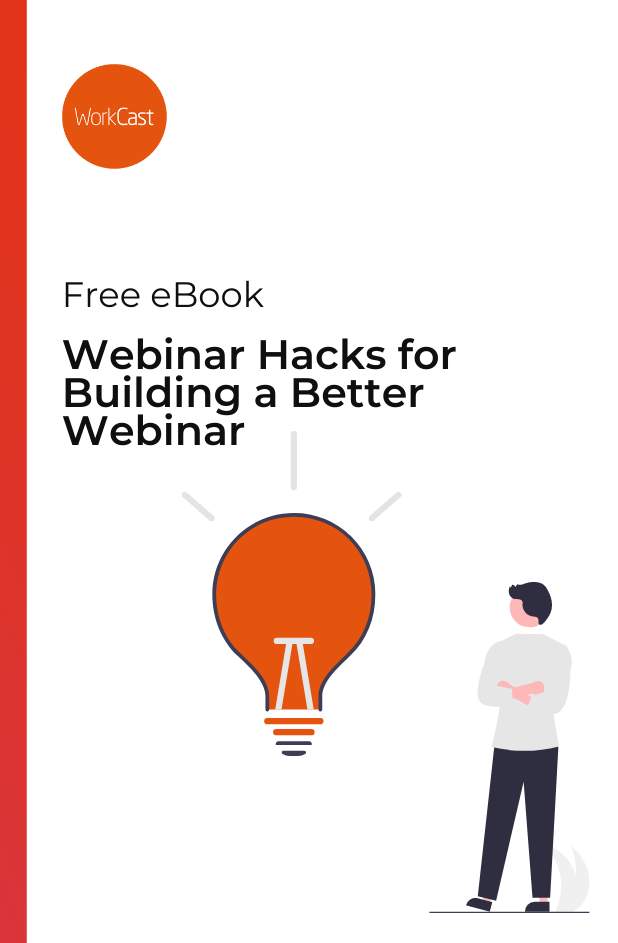If you've ever watched a webinar, you know that they can be an exciting way to learn new information and connect with other professionals. Webinars are also a great way to build credibility and establish yourself as an expert in your field. But what if the content isn't engaging? Or the presenter is boring? Or there's no clear call-to-action at the end of it all? These challenges aren't insurmountable; there are things webinar organizers can do to keep their audiences engaged throughout the experience! We've put together some tips you can implement right now to help you combat audience webinar fatigue to help keep your attendees tuned in.
Pick the right webinar format for your audience.
To keep your audience engaged for the duration of the webinar, you'll need to find out how they want to engage with you. Do some research on what format works best for them and make sure you're using a combination of different formats to keep it interesting. In addition, if you're planning on hosting a live webinar, mark sure you have all the right equipment ready in case something goes wrong or you have unexpected questions from people who are watching so you don't keep them waiting!
Try to keep the webinar to 30 minutes.
If you run a lot of webinars, it can be easy for your audience to start feeling fatigued. They may have seen the same information in previous webinars and may not feel the need to tune in for every one. If this is the case, try keeping your webinars to under 30 minutes. Having your webinar run over the 30-minute mark is a big ask for people with busy schedules.
Make sure you are highlighting your most valuable content in the first 10 minutes.
You should make sure that the content you're including in your webinar is valuable and relevant to your audience. It should be useful, actionable, interesting, engaging - and if it's not, don't include it!
The reason why you want to start with the best stuff right away is that even if your audience doesn't know it yet (or at least won't admit to it), most people are really bad at focusing on one thing for long periods of time. If you don't hook them early on with something interesting or valuable then they will get bored and check their email/newsfeeds and never come back.
Have an engaging presenter, not just a talking head.
One of the most important aspects of any webinar is the person presenting. If you have an engaging presenter, people will be more likely to stay engaged throughout the webinar. That doesn't mean that your presenter needs to be a comedian or a movie star - just someone who knows what they're talking about and has enough charisma to keep things interesting.
If you don't have an engaging speaker, there's no point in even trying other tactics because people won't stick around for long enough for you to give them a try! You want someone charismatic and informative so that people stay interested in what's being said and how it applies directly to their business or personal life.
If you have a panel, make sure they are responsive and engaging with each other.
A good way to keep your audience engaged is to make sure that the panelists are engaging with each other. If they are not, then you need to have a moderator who can keep them on track. You can also include a Q&A session at the end of the webinar so the audience can ask your panel questions in real-time and possibly engage with one another more deeply.
But if it doesn't make sense for your audience to engage after they finish watching (for example, after a whitepaper presentation), then don't feel like you absolutely have to include a Q&A session just because everyone else does!
Have something for the audience to act on at the end of the webinar or send out resources and content in a follow-up email.
At the end of your webinar, you should have a call-to-action for your audience. This can be something as simple as asking them to check out your company's website or signing up for a free trial. If you're hosting a webinar for one of your customers and want them to use your product, then make sure that's clear at the end of the presentation so they know what you want from them.
You don't want to just ask people to sign-up for more information or buy something without any content, but if there is an action that is associated with this request (i.e., "try" or "buy"), then it will seem less like harassment and more like genuine interest in their goals.
Once someone has finished viewing a webinar, it's also best practice to follow-up with an email with a link to the webinar in case they'd like to watch it again. Make sure to include all of the resources you mentioned during the webinar so that attendees can access them easily and stay informed about your company and product even after they leave.
Get audience feedback - and act upon it!
Of course, no matter how well you prepare your webinar content, it's important to keep your audience in mind. That's where a feedback tool can come in handy. With a feedback tool you can ask your audience what they liked, what they didn't like and what they would change. Then you can use that feedback to improve your next webinar.
But don't forget: even if someone has given negative feedback on a particular topic, that doesn't mean they won't want to hear more about it later down the road - you may just need to present it differently. And if someone gives positive feedback but asks something else? Well then now is the perfect time for you as an expert presenter to add further value!
Round-up
We hope this blog has given you some ideas to combat audience webinar fatigue and make your webinars more engaging. Remember that the best way to keep your audience engaged is through real human interaction, so our tips are all about making sure your webinar doesn't feel robotic or boring. Finally, if you're struggling with finding content or keeping people interested, don't be afraid of asking for feedback from your target audience!
Share this
You May Also Like
These Related Stories

Maximizing Webinars: Boosting Registrations Beyond Zoom

5 Tips for Writing the Best Webinar Introduction Script



